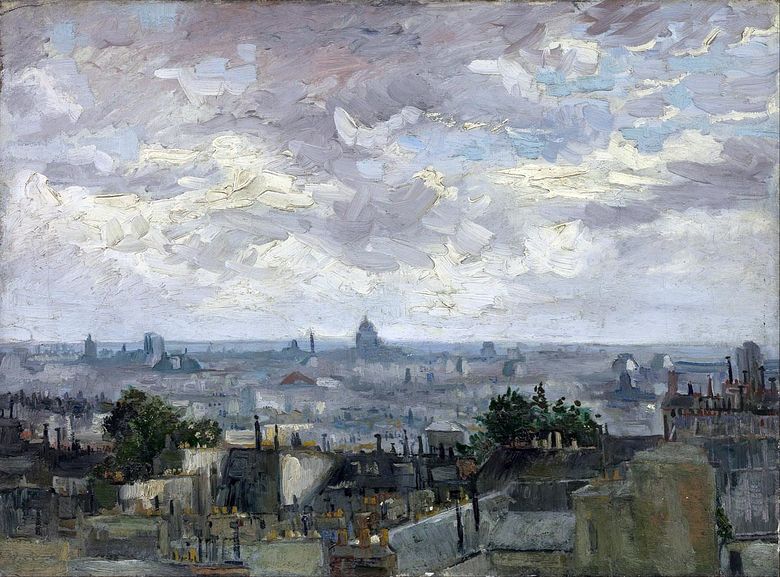
In the winter of 1886, Van Gogh arrived in Paris. Here he meets many artists, including Paul Signac, Henri Toulouse-Lautrec, Emil Bernard. Creativity of these authors subsequently formed a new art, based on a fundamentally new view of painting. Communication with them in many ways influenced the development of Van Gogh as an artist.
In the company of new friends, and sometimes alone, Van Gogh often engaged in painting from life, capturing in his sketches Paris and its environs. As a result, there are many sketches, sketches and ready-made works, including this picture. On it, the artist depicted the southeastern part of Paris. On the horizon you can find out the dome of the Pantheon.
The view of Paris was written from a high point of view. Most of the canvas is a gray sky, covered with thunderclouds. The author beautifully conveyed the state of nature, depicting the long stretches of rain covered with rain.
When writing the work, Van Gogh still uses muted tones, which are characteristic of the Nyuen period of creativity. The manner of execution is mostly borrowed from the artists of the Barbizon school. Forms are fashioned with large strokes, and an almost monochromatic palette differs in the intensification of shadows, which allows expressing the state of nature even more expressively.
 View of Paris from Vincent’s Room at Rue Lepic II by Vincent Van Gogh
View of Paris from Vincent’s Room at Rue Lepic II by Vincent Van Gogh View of Arles among flowering trees by Vincent Van Gogh
View of Arles among flowering trees by Vincent Van Gogh View of Over by Vincent van Gogh
View of Over by Vincent van Gogh View of the river with fun boats by Vincent Van Gogh
View of the river with fun boats by Vincent Van Gogh Vue sur les toits de Paris – Vincent van Gogh
Vue sur les toits de Paris – Vincent van Gogh Sea view in Scheveningen by Vincent Van Gogh
Sea view in Scheveningen by Vincent Van Gogh Courtesan by Vincent Van Gogh
Courtesan by Vincent Van Gogh Boulevard Clichy by Vincent Van Gogh
Boulevard Clichy by Vincent Van Gogh